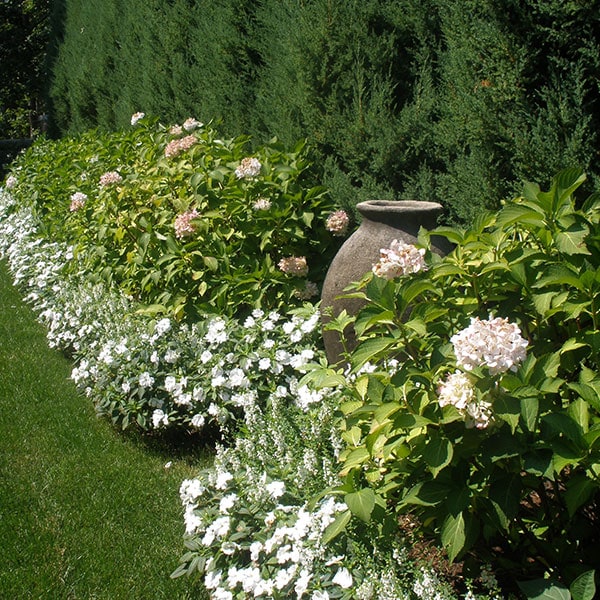If you want a thicker lawn and you live in New Hampshire, Maine, or elsewhere in New England, Fall is the time to plant grass.
If you’re thinking Spring makes more sense, we get it. Warmer days seem like the right time to plant grass seed, but in the Spring–especially early Spring–although the days are sunny and warmer, the soil temperature is still quite low. Soil temperatures are very important to turf and root development. In addition to that, Spring is when other plants and weeds want attention too, and this can interfere with grass growth.
What type of turf is the best to plant during Spring in New England?
In New England we often see a few different types of turf. They are Kentucky Bluegrass/Ryegrass and Fescues. If you are looking for a quick result, then sod is the right option. If you are looking for a lower initial investment, then seeding would be the way to go. Customers who are eager to have new grass in the Spring, sod will provide immediate coverage. Sod can be harvested in the winter if the ground is free of frost and then installed when it is dormant. Although coverage is instant, sod requires special care so it can properly take root before it can handle foot traffic.
When is the best time to schedule grass seeding with PLTS?
If you are looking to schedule seeding or sod, it’s important to reach out to us as soon as possible. The Fall growth time in New England is relatively short and our calendar can book up quickly.
If you’re able to hold off on your lawn renovation or install until the end of summer, the payoff is worth the wait. Seed germination occurs much quicker than in the early Spring due to higher soil temperatures, and because the turf plant is not competing with weed seeds in the soil profile. Typically, the ideal timeframe to seed begins the last week of August and ends the second week of October, but it’s all weather dependent. Overseeding in October-November can give your lawn a headstart for the following Spring. Seed that ends up germinating in late Fall will then be past the germination period and into vegetative growing in the Spring.
Other tips for getting the best grass!
- First, be sure to plant grass only in areas where it can flourish. Grass needs sunlight, as well as soil that allows for the uptake of nutrients and water.
- Be careful not to overwater. Excess water promotes disease, reduces the nutrients available in the soil profile, and will ultimately result in the death of the plant. Grass has adapted over time to survive under drought conditions–if the soil doesn’t hold enough moisture for the plant to complete its regular growth cycle, the grass will go into a state of dormancy. Lawns without irrigation in the heat of summer will turn brown in patches, if not the entire lawn. (Brown is not always bad). But as soon as the plant senses adequate moisture In the soil, the grass will green up and go back into its normal growth cycle. Overwatering in times of high heat can actually contribute to grass dying during its period of dormancy, so less water is always better than too much!
- Newly established turf, grass planted in high traffic areas, and manicured turf used on sports fields and golf courses requires nutrients to establish and thrive. Lawns need N-P-K (Nitrogen-Phosphorus-Potassium) in some form to establish roots and mature into a plant that can withstand stresses throughout the growing season and over the winter.
- Try not to mow your grass shorter than 3 inches. This will allow the plant to establish deeper roots. The root to shoot ratio in the lab is 1:1, so the longer the shoot the deeper the roots. The grass shoot absorbs sunlight to create food, and the roots dive down to find water and nutrients.
- Fall clean ups are necessary. Removing leaves and debris ensures that the grass is exposed to sunlight and air flow, allowing it to survive and thrive come spring.
- In New England, weather is the deciding factor in the health of your lawn. Try to use the weather in your favor instead of working against it. The plant will show you what it needs.
While there are many ways to minimize weed growth in the lawn, they can counteract new seed germination. On the flip side, when you overseed in the Fall your chances are much better because the seed is not fighting with any other plant growth and it really likes the warm days and cooler nights with soil temperatures still high and optimal. We recommend starting to overseed in late August and the whole month of September is really well suited for planting grass in New England.
To increase your success we strongly recommend aeration before planting. Aeration is critical, and in some cases we double-aerate to increase the percentage rates we see with germination.
What does aeration do exactly? Three essential benefits:
1. Allows more air and water to get to the root zone of the turf.
2. Reduces some thatch layer and compaction in the soil. This also allows nutrients to better enter the root zone.
3. Helps create/retain more moisture in the soil to help the grass seed thrive. When you poke holes across the lawn at 1-2″ apart the grass seed will fall into those holes and be protected from wind, or too much sun. Grass seed must have contact with the soil in order to germinate.
Once you’ve overseeded, we recommend watering 3x/day for 10 minutes each time. However, it is important to look at the surroundings to tighten up a watering schedule, i.e. full sun, some shade, etc…
These tip are brought to you by PLTS’s resident lawn care pro, Brian McGrenaghan. Brian has years of experience in the golf industry, where a plush green course is highly coveted. He had the opportunity to assist with a ‘grow in’ for a brand new course in New York, where he learned “the hard way” what is really needed to grow and maintain beautiful green grass in all kinds of conditions. Questions about how to get that golf course green in your front yard? Give us a call or click here — we’re here with the expertise to help you get the lawn of your dreams!
**Note: This post was updated in April of 2024 with new contributions from Account Manager and Licensed Turf Professional, Josh Noiles.






